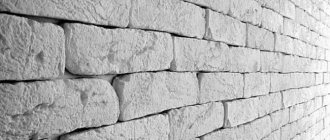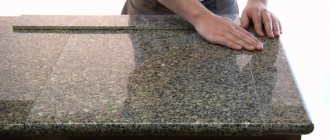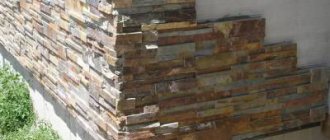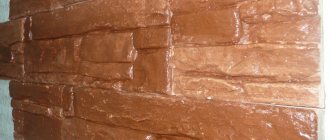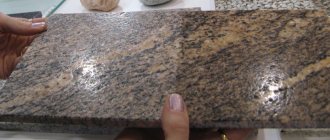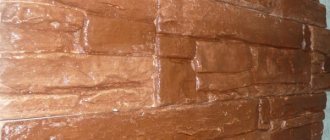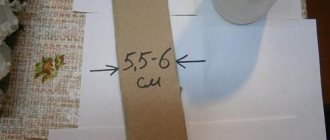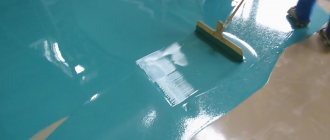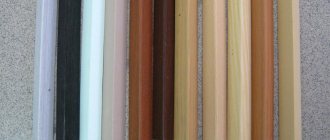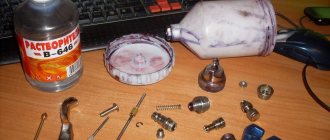One of the key advantages of artificial stone is the possibility of restoration: with the necessary skills and tools, you can eliminate even deep cracks and chips, and shallow scratches can be removed even easier by polishing.
One of the key advantages of artificial stone is the possibility of restoration: with the necessary skills and tools, you can eliminate even deep cracks and chips, and shallow scratches can be removed even easier by polishing. Before you start, the surface needs to be sanded, especially if it has been restored.
Polishing stone at home
Natural stone has been one of the best building materials for many years.
Previously used as a main building material, it is currently used more as a finishing material. Countertops, window sills, fireplaces, floors are made from it, and interiors and exteriors are decorated with it. The influence of time leaves its traces even on such seemingly eternal material. What should you do if your natural stone countertops have lost their luster and have dull colors?
Peculiarities
Artificial stone is much cheaper than natural stone, but in some performance characteristics it is superior to the natural version.
There are two main types of materials used in furniture making: acrylic and agglomerate.
Acrylic stone is a composite material consisting mainly of acrylic resins with the addition of chips of natural stones and coloring colors.
Agglomerate is another composite, but in its structure 90% or more is made up of stone chips - marble, quartz or granite. Polyester resin is used as a binding ingredient; this combination gives the material special strength and strength. For maximum similarity with natural material, mirror particles and coloring pigments are introduced into the mixture.
The countertop in the kitchen is used intensively, so scuffs, cuts, gouges and other surface defects often appear on it. To restore the decorative appearance of the product, they resort to polishing. Of course, you can always turn to qualified specialists - but their services are expensive, so many people prefer to restore artificial stone surfaces with their own hands. Having minimal work skills and armed with a working tool, this is not difficult to do. It is only important to strictly adhere to the process technology and follow the advice of experienced craftsmen.
Advantages and disadvantages of artificial stone
Artificial stone is cheaper than natural stone and at the same time superior to it in some respects. There are two types of this material : acrylic and agglomerate.
Acrylic stone is a composite material consisting mainly of acrylic resins, chips of natural stone or minerals and dyes.
Agglomerate is also a composite material. But it consists of 90% or more natural chips (quartz, granite, marble). Polyester resin acts as a binding base. This combination of components gives the agglomerates special strength.
Pigments, mirror particles and other components are also added to the mixture to make agglomerates to make them resemble natural materials.
Pros and cons of acrylic
First, let's list the advantages of acrylic surface :
- the material is plastic and suitable for making complex and unusual shapes;
- solid appearance, imitating natural wood;
- easy to clean;
- large selection of colors and patterns;
- forms a single canvas without joints;
- pleasant to the touch, warm surface;
- defects can be easily eliminated on site; there is no need to dismantle the tabletop.
Flaws:
- acrylic is unstable to external influences and is easy to scratch (defects are especially noticeable on glossy, plain surfaces of dark colors);
- instability to high temperatures - stains form under the influence of heat;
- accidental contact with acids or dyes will cause stains (dangerous from vinegar, lemon juice, food coloring, etc.).
When choosing an acrylic countertop, give preference to light shades with the texture of natural stone. On such a surface, small scratches and chips are less noticeable.
After installing an acrylic countertop in the kitchen, carefully study the operating conditions of the material . Knowing about weak points will help maintain the beautiful appearance of the surface.
Interesting things on the site:
How to wash and clean the glossy surface of the headset
How to clean kitchen tiles from grease and dirt
Pros and cons of agglomerate
The agglomerate is closest to natural stone both in appearance and to the touch. Pros of this material :
- low cost compared to natural granite and marble;
- presentable appearance;
- strength, durability, ease of maintenance;
- resistance to mechanical damage, acids and dyes;
- higher resistance to high temperatures compared to acrylic.
Minuses:
- agglomerate is a dense and heavy material, labor-intensive to process and difficult to install;
- presence of seams on the surface;
- despite its strength, it is afraid of abrasive detergents;
- over time, microscratches appear on the polished surface, depriving the surface of its beautiful shine;
- restoration of such a countertop requires special equipment and preparation;
- relatively small selection of colors and textures;
- not suitable for making complex shapes;
- the agglomerated composite feels cooler to the touch than acrylic-based stone.
Thus, agglomerated composite countertops are stronger and more durable, but are more expensive and are not suitable for surfaces with complex shapes.
Preparation for polishing
Before polishing, the slab is prepared; this stage consists of the following steps:
- Fat removal. For this purpose, chemical compounds are used. You cannot skip this stage. If the surface is not cleaned, the abrasive disc will become clogged with dirt during the polishing process.
- Grinding. Sandpaper is used to make abrasive wheels. When performing work, the master first uses wheels with large grains. Then their size is reduced, this allows you to create an even and smooth surface. During operation, the grain size changes from P120 to P1500.
To prevent the surface being treated from heating up, water is sprayed onto it, and only then it is passed through with a machine. Experts recommend using sprayers, so the moisture will be evenly applied to the stove.
Spraying not only prevents heating. It helps remove the smallest particles of dust that are formed when a sander is passed over the surface of the slab.
Once sanding is complete, the surface of the countertop will be smooth. But microscopic cracks will remain. They are removed at the next stage, which involves polishing.
Sanding artificial stone countertops
Repairing an artificial stone countertop begins with removing the fat layer and sanding . A layer of fat forms on the surface during the operation of the product; it is removed using special cleaning compounds.
Important! To clean countertops from grease, use special cleaners for artificial and natural stone.
If the grease deposit is not removed , the abrasive disc will become clogged during processing.
The next stage is grinding . This is a rough preliminary surface treatment for the purpose of removing deep scratches, sanding seams after gluing or repairing large chips.
For grinding, use a set of replaceable abrasive wheels made of sandpaper of different grain sizes. Grinding is carried out in several stages - from 8 to 16 - depending on the characteristics of the material and the degree of damage.
The grain size of the wheels is gradually changed in the direction of reducing the grains of the abrasive material. Start with abrasive material marked P120. Next - in increasing order: P150, P180, P240, P320, P500, P1000, P1500.
It is recommended to wet the surface during the grinding process by adding a small amount of water under the grinder . Water reduces the heating of the surface being treated and cleans the abrasive from dust. To moisturize, it is convenient to use a sprayer for watering flowers.
Step-by-step grinding prepares the surface for the next stage - polishing . At the end of the first stage, a smooth, matte-glossy surface is obtained with microscopic scratches, which are removed by polishing.
Polishing paste
Specialized stores offer a wide selection of compositions for both machine and manual polishing of artificial stone. A distinction is made between highly aggressive initial polishing agents and finishing pastes . There are also one-step polishing compounds available.
Advice. To avoid making a mistake when choosing a polishing paste, consult a specialist. It is best to contact the countertop manufacturer.
The polishing composition fills pores and microcracks, preventing dirt from accumulating in them , and gives the surface a mirror shine. The product has a gentle effect on the surface, does not scratch or damage it.
Types of artificial stones for countertops
To imitate natural rocks, different materials are used:
- Acrylic stone. You can use it to make countertops with any colors and textures, to assemble a work surface without seams with any geometry. Disadvantage: instability to scratches and abrasion.
- Quartz agglomerate (quartz and mineral chips, resin). The hardest and most durable artificial stone with minimal surface wear. The material is more similar to natural rocks than others.
- Cast stone is a polymer applied to a wooden base (chipboard or MDF). It is characterized by a wide palette of colors, impact resistance, and chemical resistance. But the number of repairs to the countertop is limited by a thin layer of spraying on the base. Its thickness is only 3-4 mm.
Despite the different origins of the materials, the update method is the same for everyone.
Grinding steps
Assess the condition of the countertop surface:
- If there are chips, then it is necessary to grind to the base of the largest one, usually 3-4 mm.
- Large scratches are sanded down to 1-2 mm; if there are only small abrasions, the sanding steps can be shortened and the surface can simply be cleaned a little. The larger and deeper the scratches, the more sanding steps will need to be completed.
Important! When working with artificial stone, grind the entire surface as a whole, and not separately problem areas, otherwise you will not achieve the integrity of color and texture.
Grinding is carried out in several stages. Before starting the first stage, thoroughly rinse the surface from grease and dirt with a detergent, otherwise the grease will get into the pores of the stone and the polishing will turn out to be of poor quality.
Main grinding steps:
- Start sanding with a coarser abrasive, as if rubbing out the largest scratches and chips.
- When grinding, it is necessary to control the pressure on the stone so that notches do not form.
- Do not forget to wet the surface with water to make the abrasive glide over the stone more easily.
- Change the abrasive fraction to a finer one and sand the surface several times with decreasing fraction, usually from three to seven stages.
Upon completion of all stages of grinding, you should have a rough matte surface of the stone with small abrasions.
Polishing
Here you will need a grinding machine and a disk attachment made of foam rubber with a diameter of 125-250 mm and a thickness of 30-40 mm, as well as a special paste for artificial stone products. It is better to work with water, but without adding it while working, but after wetting the disk. Next, the paste is applied and, with the machine turned off, evenly distributed over the disk using a back-and-forth motion.
Next, at minimum speed, polishing begins. Here you no longer need to press with constant force, but, on the contrary, vary the degree of pressure. By gradually increasing the power, we get the desired effect: the paste and remaining water will be distributed over the countertop, filling in minor defects and making it uniform. After some time, the sliding will become less smooth and this moment cannot be missed: it means that it is time to re-wet the nozzle and apply the paste.
During the process, you can wipe the polishing area with a soft sponge and look at it at an angle: this way the untreated areas will be clearly visible.
If the sanding was done properly at the beginning, then polishing the coating will not be difficult. If you do not have a grinder and related accessories, you can always contact us. Our craftsmen will put the countertop in order in a few hours, saving your time.
Review of traditional methods for cleaning artificial stone
Many people associate sinks and sinks made of artificial stone with reliability and durability. It is worth noting that a variety of products made from it look visually attractive. However, it is worth noting that artificial stone, unlike materials such as stainless steel, does not tolerate sudden temperature changes and can easily be painted with a variety of dyes (tea, coffee, juices).
Artificial stone is a composite material that is made on a polymer basis and has its own specific functionality and features. It is susceptible to the formation of cracks and small chips that may appear on it due to strong impacts or excessive physical impact. If the faucet in the bathroom leaks and allows water to pass through, then rusty streaks may form on this composite material, which will be very difficult to eliminate later.
Important! In order to avoid problems and various inconveniences in the future, you must adhere to all rules, instructions and recommendations regarding the operation of products made from composite materials. To clean them, you can use a variety of household chemicals (only for their intended purpose, having first read the instructions) and folk, time-tested products.
To clean and remove dirt, you can purchase special cleaning compounds that are sold in stores or use improvised substances that are found in every home. To clean this material you can actively use:
- Baking soda. It is a universal, best product that can remove even severe stains. Immediately before use, you need to add a small amount of water to the soda and wipe the contaminated area with it to wash it of accumulated dirt.
- Mustard powder. Able to quickly remove grease stains and other contaminants. Used dry or mixed in equal proportions with soda. To prepare a paste that is used as a cleaning composition, you need to add a little warm water to the powder.
- Citric acid. It is an organic, chemical compound that can be actively used during cleaning of even the most delicate materials. Thanks to the use of this acid, you can quickly remove dried stains left after drinking drinks such as coffee and tea. This acid is also capable of removing yellowness, salt deposits, various streaks, as well as stains that form on the countertop and sink as a result of long-term use.
- Table vinegar (9%). An excellent product that can clean almost any surface from dark stains that have formed on them, as well as large deposits of lime. Before use, vinegar must be diluted with water, maintaining a ratio of 3 to 1. You need to moisten a sponge in the resulting solution and wipe the contaminated area with it. After cleaning, the vinegar solution must be washed off with warm, clean water.
Stone polishes
Cart: empty
TOTAL AMOUNT (including discount) empty
Go to cart
- +7(495)227-04-30
- Mon—Fri 9:30—18:00
- home
- About the company History
- Philosophy
- Innovation
- Quality control
- Ecology
- Terms of Service
- Vacancies
- Policy regarding the processing of personal data
Open navigation bar
Sections of the site
- home
- About the company History
- Philosophy
- Innovation
- Quality control
- Ecology
- Terms of Service
- Vacancies
- Policy regarding the processing of personal data
Product filter
Categories
- Polyurethane adhesives and putties for stone
- Auxiliary tools for chemical agents AKEMI accessories for sealing work
- special means
- polyurethane sealing compounds
- equipment
- dosing systems, dispensers
Tags
Liquid adhesive for stone, Varnish for stone, Impregnation Nature for stone, Color enhancer for stone, Color enhancer for Transformer stone, Epoxy acrylate liquid transparent adhesive, stone adhesive for marble, wax cleaner, impregnation for marble
Tags
Home » Stone polishes
Polishes for various purposes are presented in this section. Professional polishes can add shine and enhance the natural color of natural stone.
Triple effect is great for regular maintenance of countertops, window sills and other stone products. It does not create a “film” on the surface and allows the stone to “breathe”. Anti-slip agent is relevant for caring for floors made of marble, granite, etc. There are also polishes that create a water-repellent film on the treated surface and protect it.
Caring for stone products with our products presented in the catalog is simple and effective.
Choose polishing products that are suitable for your task. If necessary, we will be happy to provide free advice on stone chemistry from Akemi.
Everything on the page
Display
- Hit!
10846 Triple effect spray, AKEMI
For daily care of countertops, bar counters, window sills and other products made of natural and artificial stone. The product creates a water-repellent effect and does not form a film; it can slightly enhance the natural color of the stone. Not suitable for dense and glazed stones.
RUB 1,491
- 10820 Polishing agent No. 10-2012 (with anti-slip effect) from AKEMI, 1 l
This polishing agent is well suited to create an anti-slip and water-repellent effect on stone surfaces. Only for interiors, excellent for treating floors and stairs made of artificial and natural stone.
RUB 1,963
- 10805 Wax polish from AKEMI, 1 l.
High-quality wax polish with polymers perfectly enhances the color and shine of the stone, and also creates a water-repellent film on the treated surface. The product is suitable for caring for the surfaces of stairs, floors and other stone products. Use indoors only.
RUB 1,586
- Discount!
11810 AKEMI polish, Liqui Polish, light marble
The polish is available in 5 different versions: light marble, dark marble, light granite, dark granite, black granite. Depending on the stone being processed, the product is selected. These products do not contain wax components and do not destroy the structure of the stone. Professional assistance in the polishing process.
4,347 RUR 3,359 RUR
- Discount!
11815 AKEMI polish, Liqui Polish, dark marble
The polish is available in 5 different versions: light marble, dark marble, light granite, dark granite, black granite. Depending on the stone being processed, the product is selected. These products do not contain wax components and do not destroy the structure of the stone. Professional assistance in the polishing process.
4,347 RUR 3,359 RUR
- 11861 Anti-slip agent from AKEMI, Anti Slide R9, 1l
A professional preparation for creating an anti-slip effect on wet surfaces of polished stone. Excellent for processing granite, labradorite, gabbro, as well as ceramic tiles and enameled surfaces. Products made of marble, limestone, dolomite, glass and porcelain cannot be processed.
RUB 8,660
- 10842 Silicone polish from AKEMI, 1 l
Polish for indoor and outdoor use provides resistance to precipitation, enhances shine and does not affect the color of the stone. Well suited for dense polished surfaces of natural and artificial stones. This polish is made on the basis of silicone oils and additives.
RUR 2,784
- Discount!
11820 Polish from AKEMI, Liqui Polish, black granite
The polish is available in 5 different versions: light marble, dark marble, light granite, dark granite, black granite. Depending on the stone being processed, the product is selected. These products do not contain wax components and do not destroy the structure of the stone. Professional assistance in the polishing process.
4,347 RUR 3,359 RUR
- Discount!
11805 AKEMI polish, Liqui Polish, dark granite
The polish is available in 5 different versions: light marble, dark marble, light granite, dark granite, black granite. Depending on the stone being processed, the product is selected. These products do not contain wax components and do not destroy the structure of the stone. Professional assistance in the polishing process.
4,347 RUR 3,359 RUR
- Discount!
11800 Polish from AKEMI, Liqui Polish, light granite
The polish is available in 5 different versions: light marble, dark marble, light granite, dark granite, black granite. Depending on the stone being processed, the product is selected. These products do not contain wax components and do not destroy the structure of the stone. Professional assistance in the polishing process.
4,347 RUR 3,359 RUR
- 11900 Thick wax for polishing honey color from AKEMI, 1 l
The thick polish is honey-colored. Can be used outdoors and indoors. The wax is suitable for polishing granite, marble and other natural stones.
RUR 2,248
- New!
11905 Thick wax for polishing black, AKEMI, 1 l
The thick polish is black in color. Can be used outdoors and indoors. The wax is suitable for polishing granite, marble and other natural and artificial stones of dark and black color.
RUR 2,579
© AKEMI, 2021
- home
- |
- About company
- |
- Stone exhibitions
- Payment and delivery
- |
- News
- Shop
- Moscow, st. Kantemirovskaya, 59A, office. 21
- +7(495)227-04-30
- [email protected]
- Favorites (0)
- Compare (0)
- Viewed products (0)
Up
Turtle discs for polishing
Turtle diamond polishing discs are used to process straight or curved surfaces. They consist of a durable flexible base and a mixture of diamond powder and a durable heat-resistant polymer. Thanks to the neutral-colored binder, the discs do not leave streaks. The Velcro located on the reverse side facilitates their quick replacement.
The work is performed sequentially with discs with diamond grits of 50, 100, 200, 400, 800, 1500, 3000 and BUFF inclusive. The last type is intended for final polishing. Diamond blade No. 50 has the coarsest grain, and No. 3000 has the finest.
